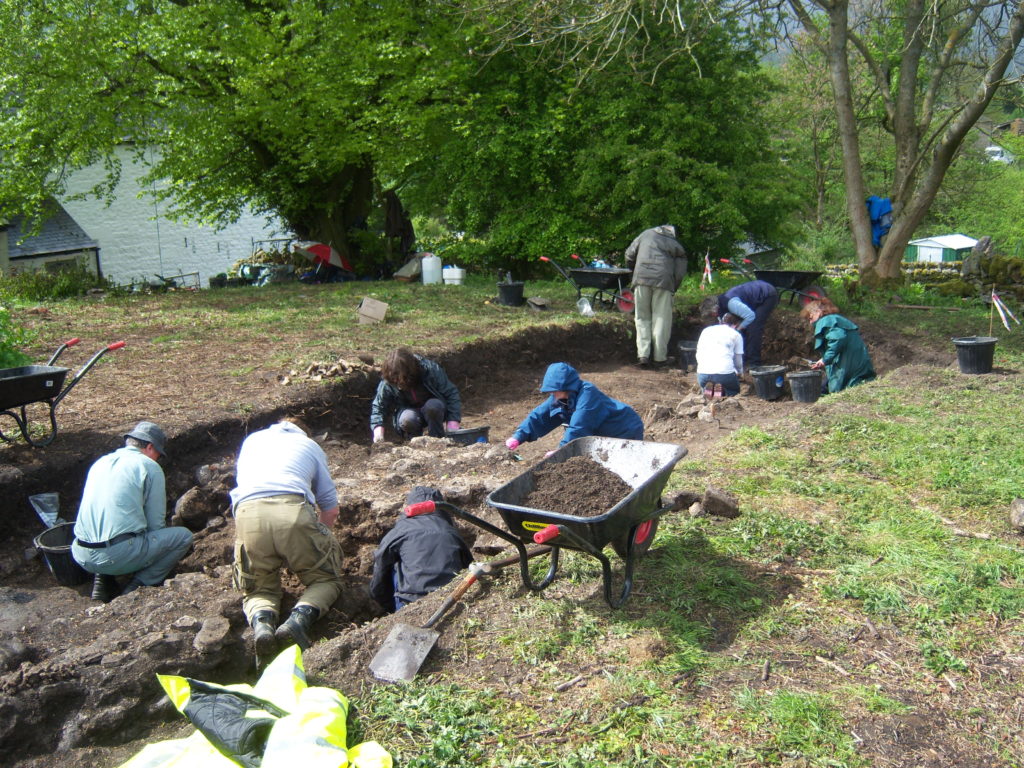News
Geopark at home 3
5 December 2024
Geopark at home
Activity 3 – fossilisation fun
Download a printable version of these instructions here.
Fossils are the remains or impressions of ancient living things. It is rare that a creature will get preserved and be fossilised. Find out how difficult it is to preserve a perfect fossil in this hands-on activity.
You will need:
- Bowl or cup (preferably see-through)
- Clay or plasticine (small palm-sized blob)
- Sugar cubes (x3)
- Water
- Paper Towel (or something for the mess)
What to do:
With your three sugar cubes:
- Wrap one completely in clay
- Wrap one half in clay
- Leave one as it is
Put all three sugar cubes in the bowl and cover them with water.
Once the sugar cube with no clay on it has dissolved so that you can’t see it any more, take out the remaining two.


What’s going on?
Sugar dissolves in water. It’s still there, but invisible. When a creature dies, the soft parts of its body usually rot away quickly, and even the hard parts like bones and shells get broken up and weathered away over time. Without any protection, just like the sugar cube you didn’t put any clay on, the creature has very little chance of being preserved and becoming a fossil.
The sugar cube you wrapped half in clay has also partly dissolved. Can you see the patterns the sugar cube has left behind on the clay? Creatures, or in this case sugar cubes, can sometimes leave behind a print of their shape and texture. This is called an imprint fossil.
The third sugar cube’s outcome will be different depending how well it was protected by the clay. You may find you have a perfectly preserved sugar cube hiding within the clay. If so, your sugar cube defeated the odds and was fully preserved. In real-life this is extremely rare. You may find that some water leaked in and your sugar cube was partly dissolved. This is much more common. Usually, only parts of a creature are preserved, if anything at all, leaving geologists to piece together what the creature may have looked like.
About 360 to 300 million years ago, the bit of the Earth’s crust that is now the North Pennines was down near the equator, at the edge of a shallow tropical sea. This tropical sea was bustling with life and its remains mixed into mud on the sea floor. The mud hardened to form limestone, trapping some of the remains and preserving them as fossils.
River deltas sometimes covered the seabed in sand and mud when sea levels were low, forming layers of sandstone and shale. You can also find fossils in sandstone, but these fossils tend to be imprint fossils of thing like shells and plants.

Take it further:
Start again with new sugar cubes.
- What happens if you use a larger or smaller amount of clay?
- Try stirring the water with your finger. Does this make a difference?
- What if you use warm water instead of cold?
- What other materials dissolve in water? Try things like salt, sand or coffee granules and see what happens.
Share your pictures or comments on Facebook or Twitter, and let us know if you enjoyed this Geopark at home activity.
Facebook: https://www.facebook.com/NorthPenninesAONB
Twitter: https://www.twitter.com/NorthPennAONB













